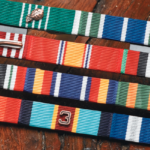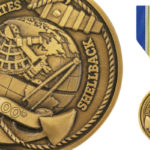According to the National Purple Heart Hall of Honor, there have been an estimated 1.8 million Purple Hearts awarded since the decoration’s official establishment in 1932. That means that nearly 2 million brave American soldiers have willingly put their lives on the line for the betterment of our country, not to mention the many who were not recognized for their sacrifices. All of these soldiers were remarkable in some way—they were, of course, war heroes—but some lived especially fascinating lives, making significant contributions to the arts, the United States military and the communities they served.
WHO CAN EARN A PURPLE HEART?

According to Executive Order 11016, the order authorizing the award, the Purple Heart is awarded to a member of the Armed Forces of the United States or any civilian national who, while serving under competent authority with one of the U.S. Armed Forces, has been wounded, killed or died or may die of wounds received from an opposing enemy force while in armed combat or as a result of an act of international terrorism or being a Prisoner of War.
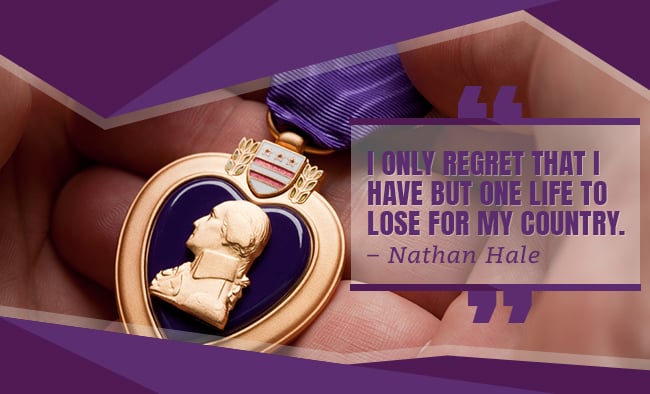
“I only regret that I have but one life to lose for my country.” –Nathan Hale
ACTORS, WRITERS, ATHLETES AND ARTISTS

- James Arness—Best-known for portraying Matt Dillon in Gunsmoke, actor James Arness (1923-2011) earned a Bronze Star and a Purple Heart following time served in World War II. He was severely injured in his right leg during the Battle of Anzio, which caused him to suffer from chronic leg pain the rest of his life.
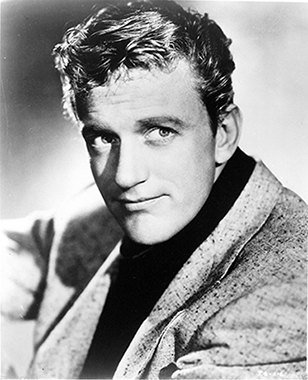
James Arness 1956 by CBS Television
- Robert “Rocky” Bleier—During his rookie season as a halfback with the Pittsburgh Steelers in 1968, NFL great Rocky Bleier was drafted into the U.S. Army to serve in the Vietnam War. While on patrol with the 196th Infantry Brigade, his platoon was ambushed, and he suffered an injury in his left thigh and lost a portion of his right foot. After discharge, he returned to the Steelers, where he played from 1971 to 1980.
- Charles Bronson—American actor Charles Bronson (1921-2003) was known for being a hero and a vigilante on screen and in real life. In 1943, he enlisted in the Air Force and, with the 39th Bombardment Group, flew 25 missions and sustained multiple wounds that were later recognized with a Purple Heart.
- James Garner—Actor, producer and voice artist James Garner (1928-2014) was best-known for playing Bret Maverick in Maverick and Jim Rockford in The Rockford Files. But before he was a Hollywood star, he served in the Army National Guard during the Korean War. He was awarded a Purple Heart and several other military decorations after sustaining injuries from a mortar round and friendly fire.
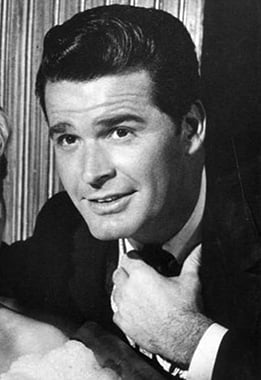
James Garner Maverick by Warner Brothers Studios
- Bill Graham—Famed German-American rock concert promoter Bill Graham (1931-1991) was famous for launching the careers of many 1960s rock stars, including the Grateful Dead and Janis Joplin, at his San Francisco music venues. After escaping the Nazis in Germany at the age of 10, Graham went on to serve in the Army during the Korean War, where he earned both a Bronze Star and a Purple Heart.
- Ron Kovic—Marine Corps Sergeant Ron Kovic was wounded, and subsequently paralyzed, after coming in contact with North Vietnamese soldiers in the Vietnam War. Kovic went on to become one of the most outspoken anti-war activists of the conflict, penning the memoir Born on the Fourth of July in 1976. The book was made into a film of the same name, made by fellow Purple Heart recipient Oliver Stone.
- Ernest “Ernie” Pyle—The famous war correspondent Ernie Pyle (1900-1945) was killed in April of 1945 by Japanese fire while accompanying the Army’s 77th Infantry. Pyle earned acclaim, and a Pulitzer Prize, for his works accounting the lives of rural Americans and soldiers during World War II before he was shot and killed near Okinawa.
- Rod Serling—Screenwriter and playwright Rod Serling (1924-1975) left a lasting impression on the legacy of television with his science-fiction smash hit The Twilight Zone. He is one of the most decorated Hollywood figures, having received a Purple Heart, a Bronze Star and the Philippine Liberation Medal, among other military decorations. Serling was awarded the decoration after he was wounded in combat in the Philippines.
- Warren Spahn—Major League Baseball All-Star and Cy Young Award winner Warren Spahn (1921-2003) created a lasting legacy after a nearly 20-year career with the then Milwaukee Braves. After finishing the 1942 season in the minor leagues, Spahn enlisted in the Army. He was wounded by a piece of bridge shrapnel in 1945 while helping to repair the collapsing Ludendorff Bridge in Germany.
- Oliver Stone—Prominent writer and filmmaker Oliver Stone, writer of Scarface, used his military career to inspire his professional work. Stone rose to prominence after writing and directing a trilogy of films based on the Vietnam War, beginning with the revered anti-war film Platoon. In 1967, Stone enlisted in the Army and requested combat duty in Vietnam. He was awarded a Purple Heart with Bronze Oak Leaf Cluster, the National Defense Service Medal and others.
- Pat Tillman—NFL footballer Pat Tillman (1976-2004) played with the Arizona Cardinals from 1998 until May 2002 when he quit the league to join the U.S. Army. He was a member of the 75th Ranger Regiment, nine months after September 11, 2001. After turning down a $3.6 million contract, Tillman was deployed to Afghanistan, where he was killed in a friendly-fire incident.
- Kurt Vonnegut—Novelist and playwright Kurt Vonnegut (1922-2007) served in the Reserve Officers’ Training Corps during World War II, where he was captured by the Germans and subsequently taken as a Prisoner of War and held in a slaughterhouse in Dresden. The experience earned him a Purple Heart and inspired his best-selling novel Slaughterhouse-Five.
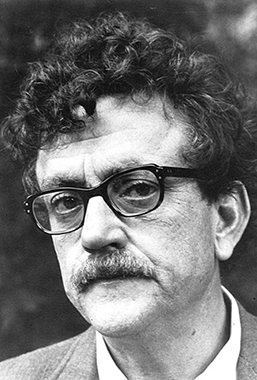
Kurt Vonnegut 1972 by WNET-TV/PBS
MILITARY HEROES AND CHANGE-MAKERS

- Charles Denver Barger—Charles Barger (1892-1936) and Vietnam veteran Curry T. Haynes have been awarded the most Purple Heart medals in U.S. military history. With 10 Purple Hearts to his name–one silver and four Bronze Leaf Oak Clusters–Barger is one of the most decorated war heroes from World War I. He was awarded the Medal of Honor for rescuing two wounded officers and one enlisted man during the Meuse-Argonne Offensive in France. He received a Purple Heart for each of the wounds he sustained during his time served.
- John F. Kennedy—President John F. Kennedy (1917-1963) is the only president to have received a Purple Heart. He received the Navy’s highest honors after bravely contributing as a gunboat pilot during World War II. While volunteering for motorized torpedo boat duty, the Japanese attacked Kennedy’s boat, plunging many of his shipmates overboard into a sea of burning oil. Kennedy dove into the waters to rescue three of his fellow shipmates and swallowed some of the water. The future president would later blame the incident for his lifelong stomach problems.
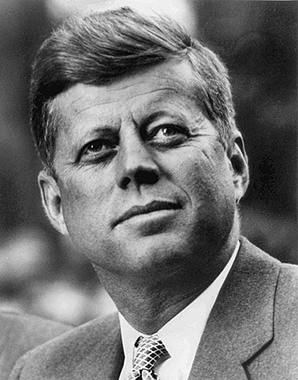
John F. Kennedy, White House Photo Portrait by White House Press Office
- John Kerry—Former Secretary of State John Kerry served a four-month tour of duty as an officer-in-charge of a swift boat during the Vietnam War. For his service, he was awarded three Purple Heart medals in addition to the Silver Star Medal and the Bronze Star Medal. His war injuries include a shrapnel wound in the left arm, a shrapnel wound in the left leg and an impact wound to his arm after he was thrown against a bulkhead during an explosion. During Kerry’s run for president in 2004, a faction of veterans called his military service into question (inspiring the word “swiftboating,” now used to describe an unfair political attack). However, Kerry’s former crewmates corroborated the politician’s story and vehemently denied any fabrication.
- John McCain—The military record of Arizona Senator John McCain (1936-2018) has been widely revered. While serving in the Vietnam War with the Navy, the former presidential hopeful received the Silver Star, two Legion of Merits, the Distinguished Flying Cross, three Bronze Star Medals, two Navy and Marine Corps Commendation Medals, the Prisoner of War Medal and two Purple Hearts. In October of 1967, McCain was captured by the North Vietnamese and held as a Prisoner of War until 1973. He returned home with serious, lifelong physical disabilities as a result of his time served.
- Lewis Lee “Red” Millett—Military iconoclast Red Millett (1920-2009) earned the Medal of Honor for his valor leading the final American bayonet charge in the Korean War. In addition to the most prestigious military honor, Millett received a Distinguished Service Cross, a Silver Star, two Legions of Merit, three Bronze Star Medals, three Air Medals and four Purple Hearts.
- Audie L. Murphy—As one of the most decorated soldiers of World War II, Audie Murphy (1925-1971) received every one of the Army’s combat awards for valor, including the Medal of Honor for single-handedly holding off an entire company of German soldiers in France and then spearheading a successful counterattack. He received three Purple Hearts during his time of service. After the war, Murphy went on to become a successful actor, starring in more than 40 feature films, until he died in a plane crash in 1971.
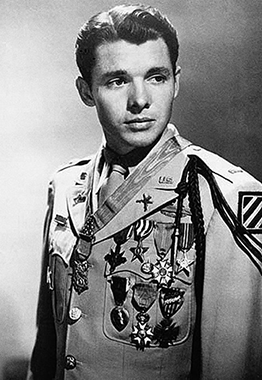
- George S. Patton—Unsurprisingly, “Old Blood and Guts” General George S. Patton (1885-1945) earned a Purple Heart after the establishment of the medal for sustaining combat wounds during World War I. The highly decorated soldier went on to command the U.S. Seventh Army and the U.S. Third Army in World War II, earning recognition and fame for his critical leadership style and colorful personality. He died in a car accident shortly after the end of World War II.
- Lewis “Chesty” Puller—Chesty Puller (1898-1971) was a Marine Corps Lieutenant General who earned hero status after fighting off guerillas in Haiti and Nicaragua. For his service in World War II and the Korean War, Puller became the most decorated Marine in U.S. military history. He received five Navy Crosses and one Army Distinguished Service Cross, in addition to one Purple Heart. Some believe that Puller should be awarded the Medal of Honor posthumously.
- Colin Powell—Former Secretary of State and Army Four-Star General Colin Powell earned many medals, ribbons and foreign decorations during his lengthy military career. Powell served in Vietnam, where he was awarded a Purple Heart following his first combat tour. When his command helicopter crashed, Powell rescued several of his comrades from the flames, including World War II Medal of Honor Recipient Jack Treadwell. The rescue earned Powell the Soldier’s Medal for heroism not involving actual conflict with an enemy.
- Calvin Pearl Titus—Medal of Honor Recipient Calvin Pearl Titus (1879-1966) is somewhat of a military legend. While serving in China with the Army’s 14th Infantry Regiment in 1900, Titus famously scaled a 30-foot tall brick wall in order to help his company gain control of the wall and weaken the enemy stronghold. Titus earned a Purple Heart for injuries sustained the following day. He was 76 years old by the time he was officially honored with the medal.
PAYING TRIBUTE TO THOSE WHO RISKED IT ALL

“No person was ever honored for what he received. Honor has been the reward for what he gave.” –Calvin Coolidge
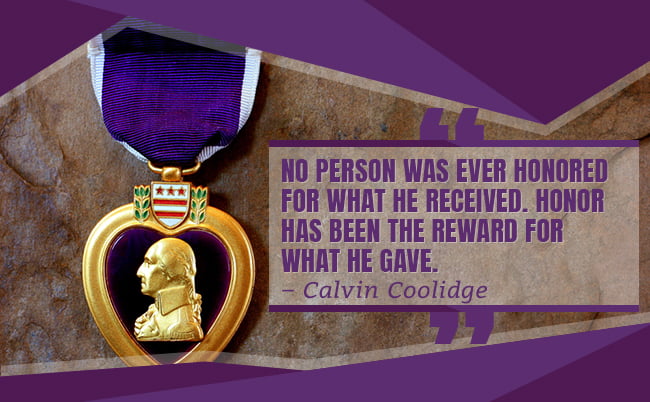
Though all American military service members are heroes who sacrifice plenty to help preserve our great nation, Purple Heart recipients have given a little more of themselves while serving with their comrades in arms defending America against all enemies of freedom and liberty. It takes bravery and loyalty to serve in combat, and these Americans demonstrated plenty. Medals of America is here to help you honor the service and the sacrifice of these valiant soldiers with military medals, ribbons and badges manufactured within the guidelines set by the Institute of Heraldry.




